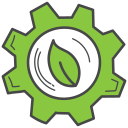Care, Maintenance, and Fixes
Tackiness usually signals too much product or insufficient wipe-off. Moisten a cloth with a touch of citrus-thinned oil, lightly wipe to reflow, then buff dry. Future coats should be whisper-thin. Share your progress so others can learn from your recovery.
Care, Maintenance, and Fixes
For moisture rings on a waxed surface, gentle warmth from a hair dryer can evaporate trapped moisture; rebuff with balm. Minor scratches often disappear after a light wax application. Deep marks? Consider a careful spot-sand and re-oil. Tell us what worked for you.







